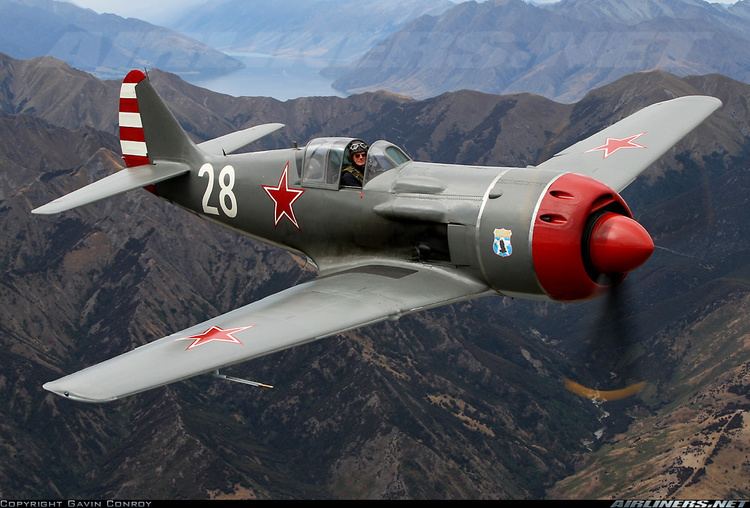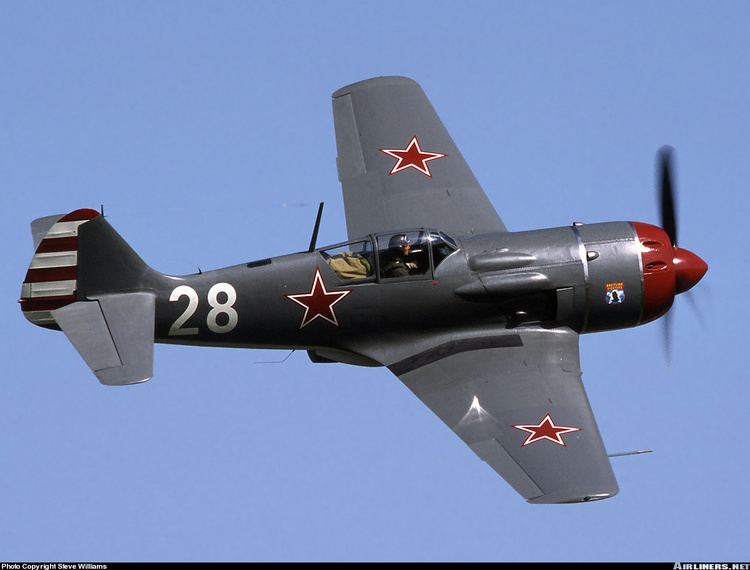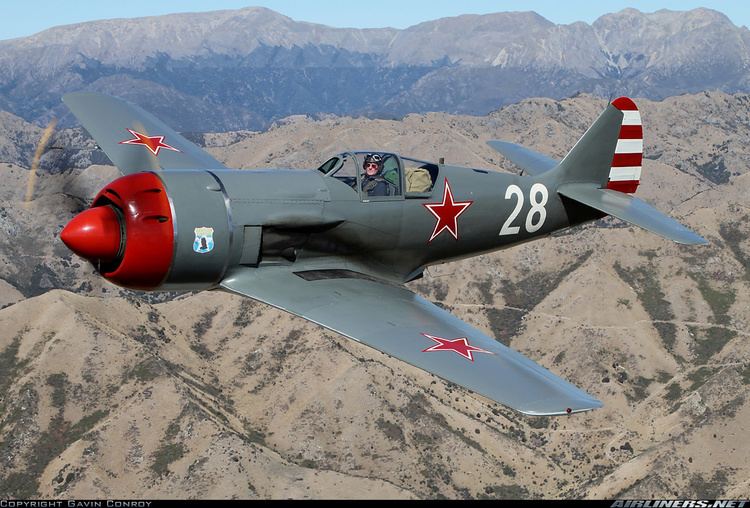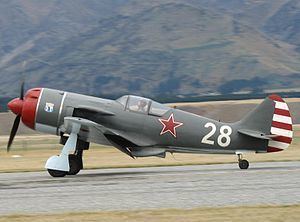Top speed 690 km/h Wingspan 9.8 m Cruise speed 560 km/h First flight 1946 | Range 1,735 km Length 8.63 m | |
 | ||
Warbirds over wanaka 2010 lavochkin la 9 l 39 albatross duo
The Lavochkin La-9 (NATO reporting name Fritz) was a Soviet fighter aircraft produced shortly after World War II. It was a piston engined aircraft produced at the start of the jet age.
Contents
- Warbirds over wanaka 2010 lavochkin la 9 l 39 albatross duo
- Development
- Variants
- Operators
- Survivors
- Storedon display
- Specifications La 9
- References

Development

La-9 represents further development of the Lavochkin La-126 prototype. The first prototype, designated La-130 was finished in 1946. Similarity to the famous Lavochkin La-7 was only superficial – the new fighter had all-metal construction and a laminar flow wing. Weight savings due to elimination of wood from the airframe allowed for greatly improved fuel capacity and four-cannon armament. Mock combat demonstrated that La-130 was evenly matched with La-7 but was inferior to Yakovlev Yak-3 in horizontal planes. The new fighter, officially designated La-9, entered production in August 1946. A total of 1,559 aircraft were built by the end of production in 1948.
Variants

Like other aircraft designers at the time, Lavochkin was experimenting with using jet engines to augment performance of piston-engined fighters. One such attempt was La-130R with an RD-1Kh3 liquid fuel rocket engine in addition to the Shvetsov ASh-82FN piston powerplant. The project was cancelled in 1946 before the prototype could be assembled. A more unusual approach was La-9RD which was tested in 1947–1948. It was a production La-9 with a reinforced airframe and armament reduced to two cannons, which carried a single RD-13 pulsejet (likely of the German V-1 flying bomb origin) under each wing. The 70 km/h (45 mph) increase in top speed came at the expense of tremendous noise and vibration. The engines were unreliable and worsened the handling. The project was abandoned although between 3 and 9 La-9RD were reported to perform at airshows, no doubt pleasing the crowds with the noise.
Other notable La-9 variants were:

Operators

Survivors
Only one La-9 remains in airworthy condition today, 828/N415ML owned by Jerry Yagen's Military Aviation Museum, restored by Pioneer Aero Restorations in New Zealand between 2001 and 2003.
Stored/on display
La-9 on display and flyable at the Military Aviation Museum, Virginia Beach, VA
Specifications (La-9)
General characteristics
Performance
Armament
